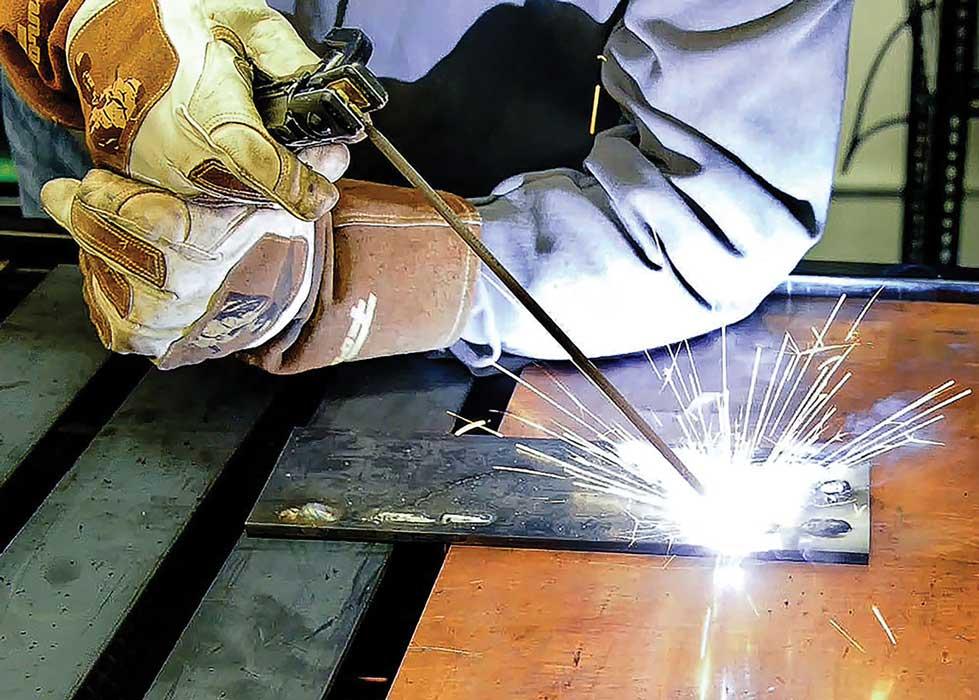Developing a Welding WPS: Step-by-Step Directions for Professionals
Developing a Welding WPS: Step-by-Step Directions for Professionals
Blog Article
Getting Welding Quality: Introducing the Keys of WPS Execution and Optimization
In the world of welding, attaining quality is a quest that depends upon the thorough implementation and optimization of Welding Procedure Specifications (WPS) These fundamental documents offer as the foundation of welding procedures, dictating the treatments and criteria needed for generating high-grade welds consistently. Nevertheless, the secrets to opening the complete possibility of WPS lie not only in recognizing its value but also in understanding the details of its execution and optimization. By diving into the key aspects, techniques, challenges, and ideal techniques connected with WPS, a world of welding quality awaits those who agree to explore its depths.
Importance of WPS in Welding
The Significance of Welding Treatment Specs (WPS) in the welding industry can not be overstated, working as the backbone for making certain uniformity, top quality, and safety in welding procedures. A WPS offers detailed directions on just how welding is to be brought out, including crucial variables such as products, welding procedures, joint design, filler metals, interpass and preheat temperatures, welding currents, voltages, traveling rates, and extra. By adhering to a distinct WPS, welders can maintain uniformity in their job, bring about consistent weld quality throughout different projects.

Crucial Element of WPS
Discussing the integral elements of a welding procedure spec (WPS) is vital for recognizing its duty in welding procedures. One vital aspect of a WPS is the welding process specification, which describes the particular welding processes to be used, such as gas tungsten arc welding (GTAW) or secured steel arc welding (SMAW) By incorporating these crucial components into the WPS, welding procedures can be standardized, making sure quality, performance, and safety and security in welding procedures.
Techniques for WPS Optimization

Second of all, training and qualification of welding workers according to the details requirements of the WPS is vital. Giving thorough training programs and guaranteeing that welders are accredited to implement procedures outlined in the WPS can result in greater top quality welds and lowered rework.
Additionally, leveraging innovation such as welding software program and surveillance systems can aid in optimizing WPS. These tools can assist in tracking variables, guaranteeing specifications are within specified limitations, and supplying real-time responses to welders, allowing them to make prompt modifications for enhanced weld high quality.
Common Difficulties and Solutions
Dealing with challenges in carrying out the methods for WPS optimization can impede welding procedures' effectiveness and high quality. One usual difficulty is insufficient training or understanding of the welding treatment specs (WPS) among the welding team. This can lead to inappropriate implementation of welds, leading to flaws and remodel. To address this, extensive training programs should be carried he said out to make sure that all welders excel in analyzing and applying WPS accurately.
One more difficulty is the lack of correct documents and record-keeping, which is crucial for WPS optimization. Without clear documents of welding specifications, products used, and examination outcomes, it ends up being tough to identify locations for enhancement and ensure uniformity in welding procedures. Carrying out a robust paperwork system, such as digital welding monitoring software, can aid improve record-keeping and help with information analysis for constant improvement.
In addition, inconsistent welding tools calibration and maintenance can pose a considerable challenge to WPS optimization. Normal equipment checks, calibration, and maintenance routines must be abided by purely to ensure that welding parameters are properly controlled and kept within the specified tolerances (welding WPS). By dealing with these usual challenges with positive services, welding procedures can improve performance, quality, and general welding quality
Ideal Practices for WPS Application
To ensure effective WPS implementation in welding operations, adherence to sector standards and precise focus to detail are vital. When launching WPS implementation, it is essential to start by completely recognizing the specific welding demands of the task. This entails an extensive evaluation of the welding treatment specifications, materials to be bonded, and the environmental conditions in which the welding will take area.
When the demands are clear, the following step is to choose the ideal welding treatment that lines up with these specs. This entails consulting the relevant codes and standards, such as those given by the American Welding Society (AWS) or the International Company for Standardization (ISO), to make certain conformity and top quality.
Furthermore, documenting the entire WPS implementation process is vital for traceability and top quality control. Thorough records need to be maintained relating to welding parameters, material prep work, interpass and preheat temperature levels, welding consumables utilized, and any discrepancies from the original procedure. Regular audits and reviews of the WPS can help identify locations for improvement and ensure recurring optimization of the welding procedure.


Final Thought
To conclude, the application and optimization of Welding Treatment Specifications (WPS) is vital for achieving click this site welding excellence. By recognizing the crucial elements of WPS, implementing efficient approaches for optimization, attending to usual difficulties, and complying with ideal techniques, welders can ensure high-grade welds and safe working problems. It is critical for experts in the welding market to focus on the proper execution of WPS to improve general welding performance and accomplish desired outcomes.
The Significance of Welding Procedure Specs (WPS) in the welding market can not be overstated, serving as the backbone for making sure uniformity, quality, and safety and security in welding procedures. A WPS provides in-depth instructions on just how welding is to be carried out, consisting of vital variables such as products, welding procedures, joint layout, filler metals, preheat and interpass temperature levels, welding currents, voltages, travel speeds, and a lot more. One crucial aspect of a WPS is the welding process spec, which details the details welding procedures to be used, such as gas tungsten arc welding (GTAW) or secured metal arc welding (SMAW) By integrating these key elements right into the WPS, welding procedures can be standardized, ensuring quality, performance, and safety and security in welding operations.
It is crucial for experts in the click for more welding industry to focus on the appropriate implementation of WPS to boost total welding efficiency and attain wanted end results.
Report this page